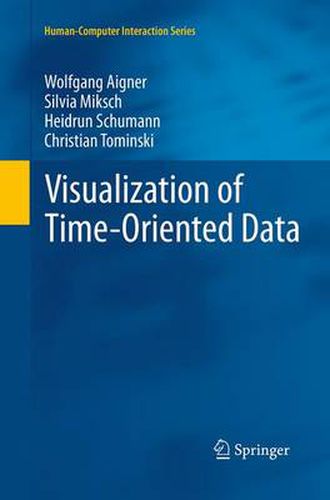Readings Newsletter
Become a Readings Member to make your shopping experience even easier.
Sign in or sign up for free!
You’re not far away from qualifying for FREE standard shipping within Australia
You’ve qualified for FREE standard shipping within Australia
The cart is loading…






This title is printed to order. This book may have been self-published. If so, we cannot guarantee the quality of the content. In the main most books will have gone through the editing process however some may not. We therefore suggest that you be aware of this before ordering this book. If in doubt check either the author or publisher’s details as we are unable to accept any returns unless they are faulty. Please contact us if you have any questions.
Time is an exceptional dimension that is common to many application domains such as medicine, engineering, business, or science. Due to the distinct characteristics of time, appropriate visual and analytical methods are required to explore and analyze them.
This book starts with an introduction to visualization and historical examples of visual representations. At its core, the book presents and discusses a systematic view of the visualization of time-oriented data along three key questions: what is being visualized (data), why something is visualized (user tasks), and how it is presented (visual representation). To support visual exploration, interaction techniques and analytical methods are required that are discussed in separate chapters.
A large part of this book is devoted to a structured survey of 101 different visualization techniques as a reference for scientists conducting related research as well as for practitioners seeking information on how their time-oriented data can best be visualized.
$9.00 standard shipping within Australia
FREE standard shipping within Australia for orders over $100.00
Express & International shipping calculated at checkout
This title is printed to order. This book may have been self-published. If so, we cannot guarantee the quality of the content. In the main most books will have gone through the editing process however some may not. We therefore suggest that you be aware of this before ordering this book. If in doubt check either the author or publisher’s details as we are unable to accept any returns unless they are faulty. Please contact us if you have any questions.
Time is an exceptional dimension that is common to many application domains such as medicine, engineering, business, or science. Due to the distinct characteristics of time, appropriate visual and analytical methods are required to explore and analyze them.
This book starts with an introduction to visualization and historical examples of visual representations. At its core, the book presents and discusses a systematic view of the visualization of time-oriented data along three key questions: what is being visualized (data), why something is visualized (user tasks), and how it is presented (visual representation). To support visual exploration, interaction techniques and analytical methods are required that are discussed in separate chapters.
A large part of this book is devoted to a structured survey of 101 different visualization techniques as a reference for scientists conducting related research as well as for practitioners seeking information on how their time-oriented data can best be visualized.